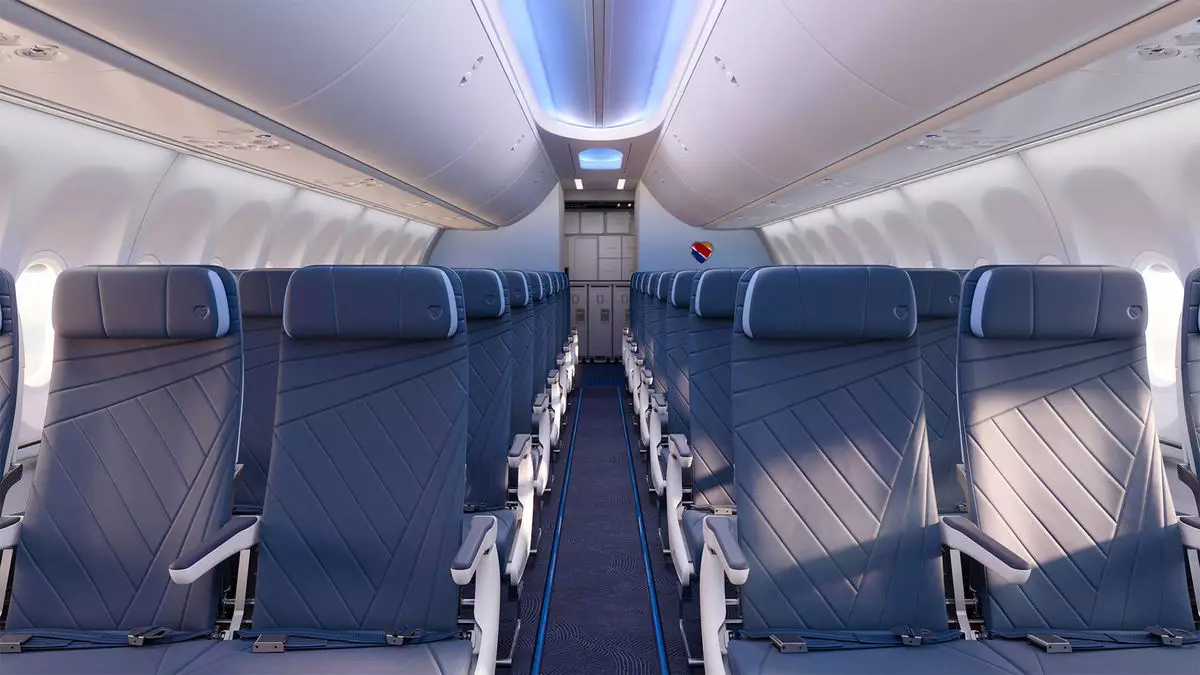Southwest Airlines, known for its open-boarding policy, is undergoing a major transformation by implementing assigned seats. This move marks a significant departure from the airline’s traditional approach to seating and will have a profound impact on the overall customer experience. With the addition of extra-legroom seats, Southwest aims to cater to the evolving preferences of its passengers. While the assigned-seating system is expected to be fully operational by 2025, details regarding cabin layout and revenue generation are yet to be finalized.
The decision to revamp the seating arrangement comes in the wake of Southwest’s underperformance financially when compared to its competitors, namely United and Delta. The shift towards premium seats post-pandemic has contributed to Southwest’s financial challenges, prompting the need for strategic changes. Activist investment firm Elliott Management, which holds a significant stake in the airline, has been advocating for commercial reforms and leadership changes within the company. Despite the pressure, CEO Bob Jordan remains resolute in his position.
Research conducted by Southwest indicates that a majority of its customers, as well as potential customers, prefer assigned seating over open boarding. The airline acknowledges that the absence of assigned seats has been a key factor leading customers to switch to other airlines. By embracing an assigned-seating model, Southwest hopes to broaden its customer base and enhance its competitive position in the market. These strategic changes align with the evolving preferences of air travelers and the market dynamics post-pandemic.
In addition to the seating revamp, Southwest has announced its foray into red-eye flying, with plans to launch overnight flights starting on Valentine’s Day 2025. The introduction of red-eye flights is part of Southwest’s broader strategy to operate 24 hours a day and optimize its flight schedules. This initiative is expected to drive operational efficiency and fuel the airline’s growth without significant additional investments in aircraft. The initial routes for red-eye flights include Las Vegas-Baltimore, Las Vegas-Orlando, Los Angeles-Baltimore, Nashville-Baltimore, and Phoenix-Baltimore.
To support its commercial initiatives and ensure a smooth transition, Southwest has appointed a new executive vice president of transformation. Ryan Green, who previously served as the airline’s chief commercial officer, will lead the implementation of various strategic initiatives, including the introduction of assigned seats and red-eye flights. The organizational restructuring underscores Southwest’s commitment to driving innovation and adapting to the changing landscape of the aviation industry.
Southwest Airlines’ decision to move towards assigned seating and premium legroom options represents a significant shift in its operational strategy. By listening to customer feedback and market trends, Southwest is positioning itself for long-term success and sustainability. The introduction of red-eye flights and the appointment of a dedicated transformation leader further demonstrate the airline’s commitment to growth and innovation. As Southwest continues to evolve and adapt to the demands of the industry, it is poised to emerge as a stronger and more competitive player in the aviation market.


Leave a Reply